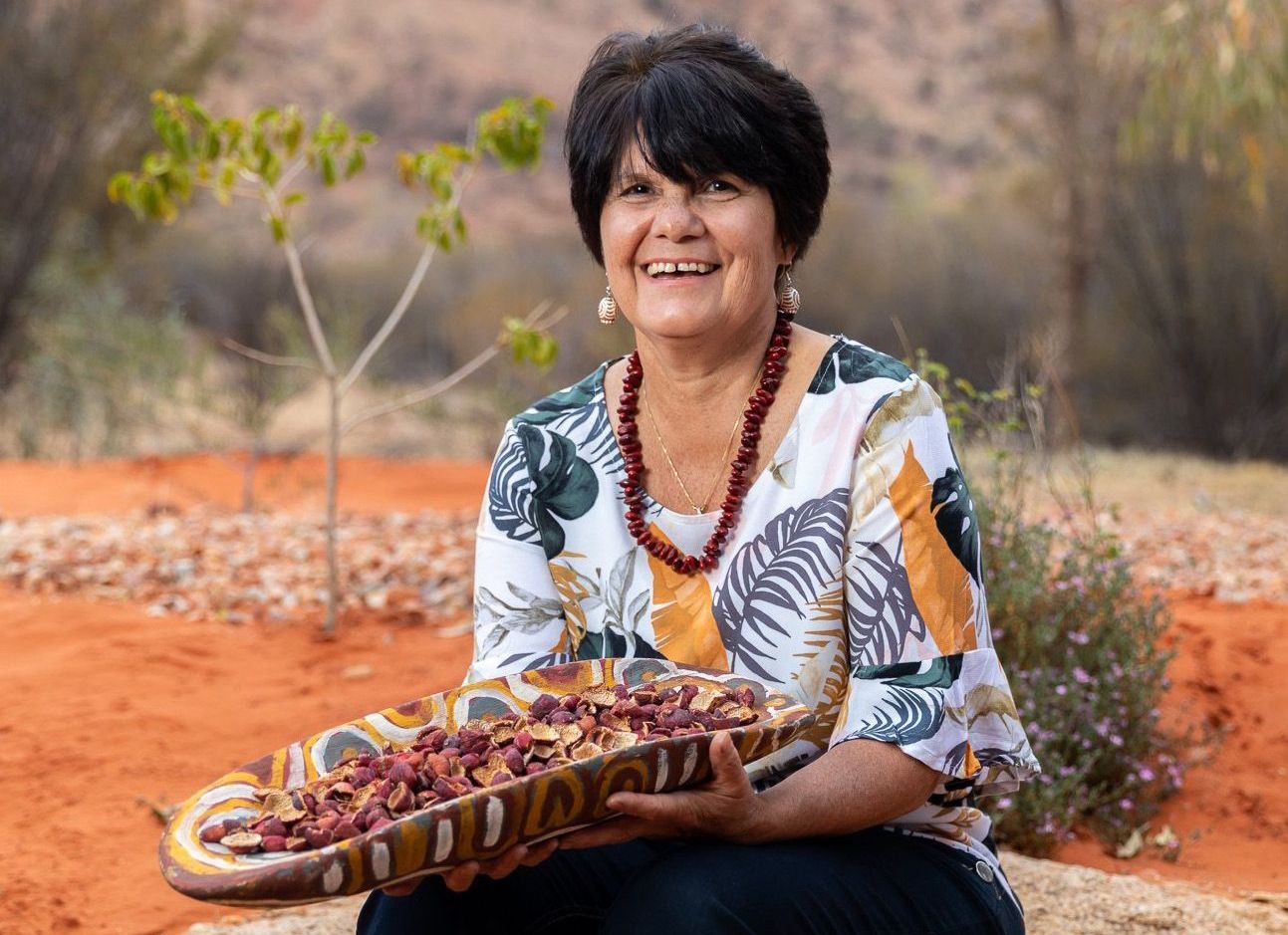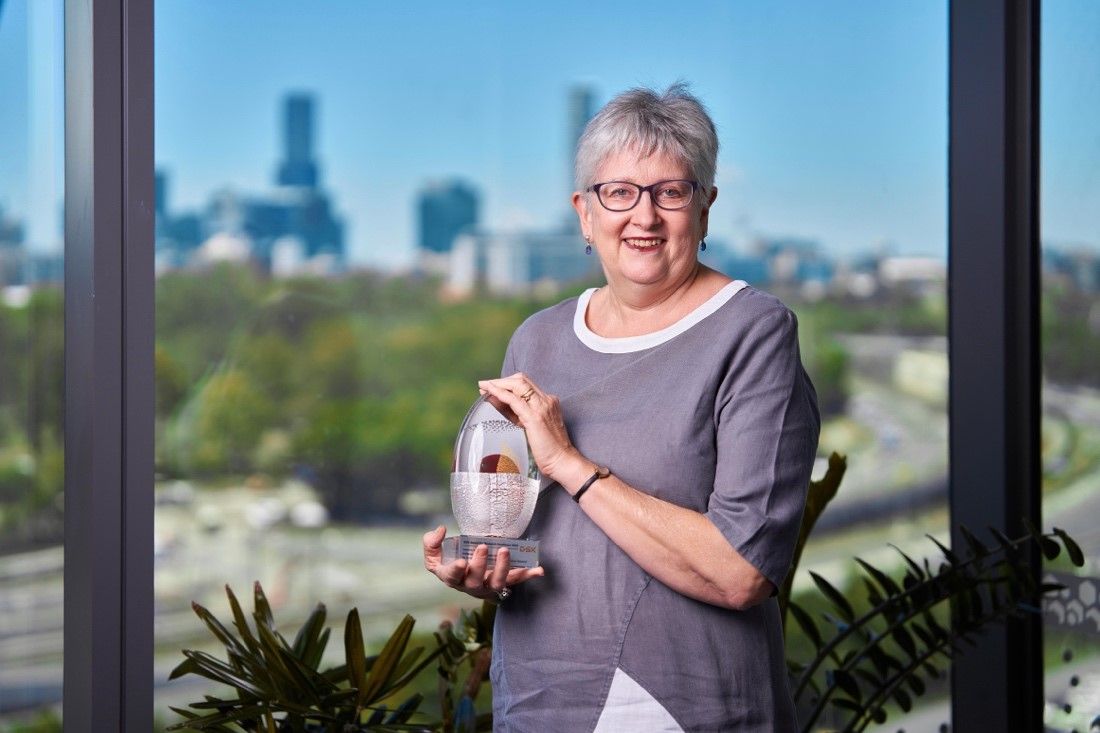Putting it on the agriculture agenda: bush foods and blockchain
Alice Springs and the deserts of Central Australia don’t sound like a food basket, but they are for businesswoman and bush foods innovator Rayleen Brown.

As the chairperson of the First Nations Bush Food & Botanical Alliance Australia, she has been working in the native food industry for almost 25 years. Rayleen is now part of an alliance lobbying for a merge between bush foods and blockchain to verify traceability across the food value chain.
It’s also about the ethics of non-Indigenous people profiting from intellectual property (IP). Indigenous women as food foragers have developed this know-how over their people’s 65,000-years of living on Australia’s ancient soils. Men’s role is to carry the harvest and they also have connection with story and songlines.
Rayleen’s ancestry is intertwined with that. Her mother’s clan is Mulvian clan Muringar people, based at the top-end of the western side of the Northern Territory.
“Nana was removed from her people and put into an Alice Springs mission, so that’s how we came to be here. My mob is the strength I draw from and makes me want to work on projects to connect with my people up north,” says Rayleen.
After finishing high school in Alice Springs, she and her husband had five children and lived on a hobby farm over the border in South Australia. When she returned to Alice Springs, Rayleen worked as a project officer for the Aboriginal Land Council, helping distribute royalty funds from mining on Aboriginal lands. The work involved flying out to remote areas to help with cultural meetings and women’s law. And that’s where her life pivoted.
“A friend at the council asked me to help him run a workshop for 100 Indigenous teachers, and I spent a week cooking for them in a tiny domestic kitchen,” says Rayleen.
Despite being sore afterwards, the experience sparked her to then set up and run a food business with an Indigenous friend. It took a year to turn that idea into Kungkas Can Cook, a café and catering service, to celebrate bushfood.
“When setting up the business in 2000, we really wanted to have that point of difference by showcasing our beautiful bushfoods,” says Rayleen. “We wanted to change people’s perception of bush foods and not for people to think of it as roadkill or weird-looking grub.”
Their business infused flavours of wattle seeds, bush tomatoes, local quandongs (a small desert tree), and “anything we could sustainably source from local Indigenous people”.
“The ladies from whom we sourced had English as a third or fourth language and were harvesting in a traditional sense the same way that had been done for many thousands of years with just bare hands and simple implements.”
For them, wild harvesting could involve shaking or brushing an acacia tree to release and collect the seeds, then carrying them in a coolamon – which is simply an Aboriginal container made of wood or bark. And with the bush tomato, they always leave some fruit for the bush turkey to eat – each type of plant has its own animal totem and story.”
“Those women were so resilient in carrying that story forward from generation to generation. I felt that what was missing from the bushfoods industry was the history behind the plant and its use. It goes back to humans surviving on land without a lot of water.”
At the time, already major food manufacturers were innovating with products sitting on Coles and Woolies’ supermarket shelves around Australia.
“A lot of our native seeds have travelled away from this land in agricultural and harvesting techniques very different to the way it’s done here. Indigenous women don’t understand why plants are grown in a straight line, and require water, fertilising, spraying and tending or even genetic modification when those same plants on country have built up their own resilience and don’t need those regimes.”
“We need to protect the biodiversity in this country or risk, as we have seen already with lemon myrtle and macadamias, foiling a huge economic opportunity to overseas. That’s why we’re looking to the blockchain which can prove the provenance of ingredients as they move across the food-value chain.”
The COVID-19 lockdowns and travel restrictions of 2020-2021prompted Rayleen to close her café and catering business, putting off her 20 employees. She now sells Indigenous food products online, runs seasonal educational tours, and has taken more of a national purview to spotlight intellectual property rights for the bush food industry. As the chairperson of the First Nations Bush Foods & Botanical Alliance Australia, Rayleen’s helping organise a national conference to be held in April 2023. It aims to address the many issues and barriers that Indigenous people face around the world regarding intellectual property and intellectual ecological knowledge.
“This industry was built on this knowledge, yet we only represent a very small percentage of business and there are very few benefit-share agreements in place across Australia. Our organisation hopes to support and strengthen indigenous businesses in the industry and build an ethical framework for industry to work within,” Rayleen says.
Among her supporters is Natalie Somerville, a South Australian broadacre cropping farmer, former agronomist, and now the president of Australian Women in Agriculture (AWiA). The AWiA was set up in 1993 to raise the visibility of women in agriculture so they could formally contribute to the agenda.










